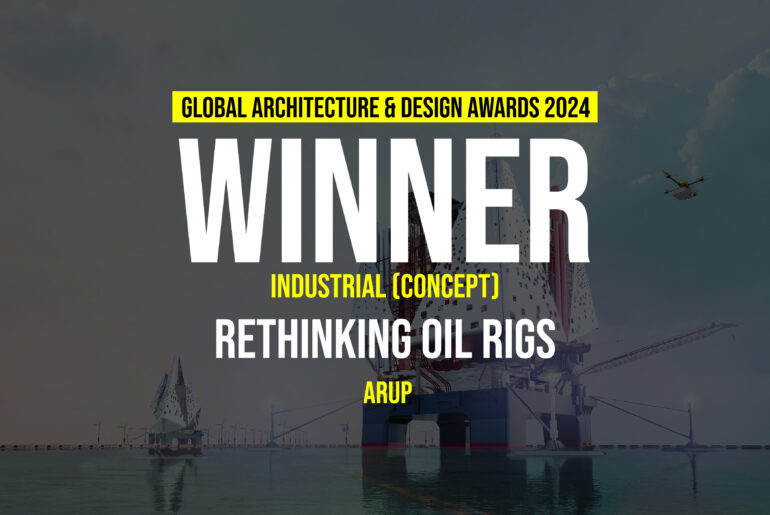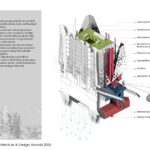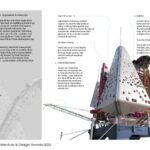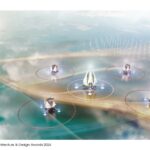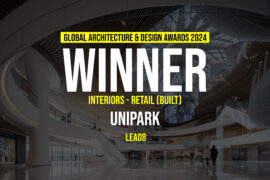As fossil fuels and finite materials dwindle, structures used for their extraction and processing, like oil rigs, will become obsolete. This shift marks the end of oil spillages into our oceans. Architects must rethink these structures, giving them new functions within the circular economy.
Global Design & Architecture Design Awards 2024
First Award | Industrial (Concept)
Project Name: RETHINKING OIL RIGS | OFFSHORE DATA CENTRES
Category: Industrial (Concept)
Studio Name: Arup
Design Team: Rachel Atthis, Marco Mugnai, Sergey Lutsenko, Saumya Ganguli and Chris Johnson
Area: Architecture, Industrial, Concept
Year:2023
Location: North Sea, Europe
Consultants: Arup
Photography Credits: Arup
Render Credits: Arup
Other Credits: N/A

While the oil economy fades, data and data centres (DC) are becoming the backbone of contemporary society. Telecom fibre cables run beneath the North Sea, while dismissed oil rigs above offer reusable spaces for data centre networks powered by renewable energy sources like wind, tidal, and sea motion-based energy farms. Reusing oil rigs saves embodied carbon compared to building traditional data centres. Existing spaces and helipads can make offshore platform data centres operational and connected from day one. These centres, cooled by North Sea winds and deep waters, will be circular, modular, and sustainable, giving new life to abandoned sea giants.
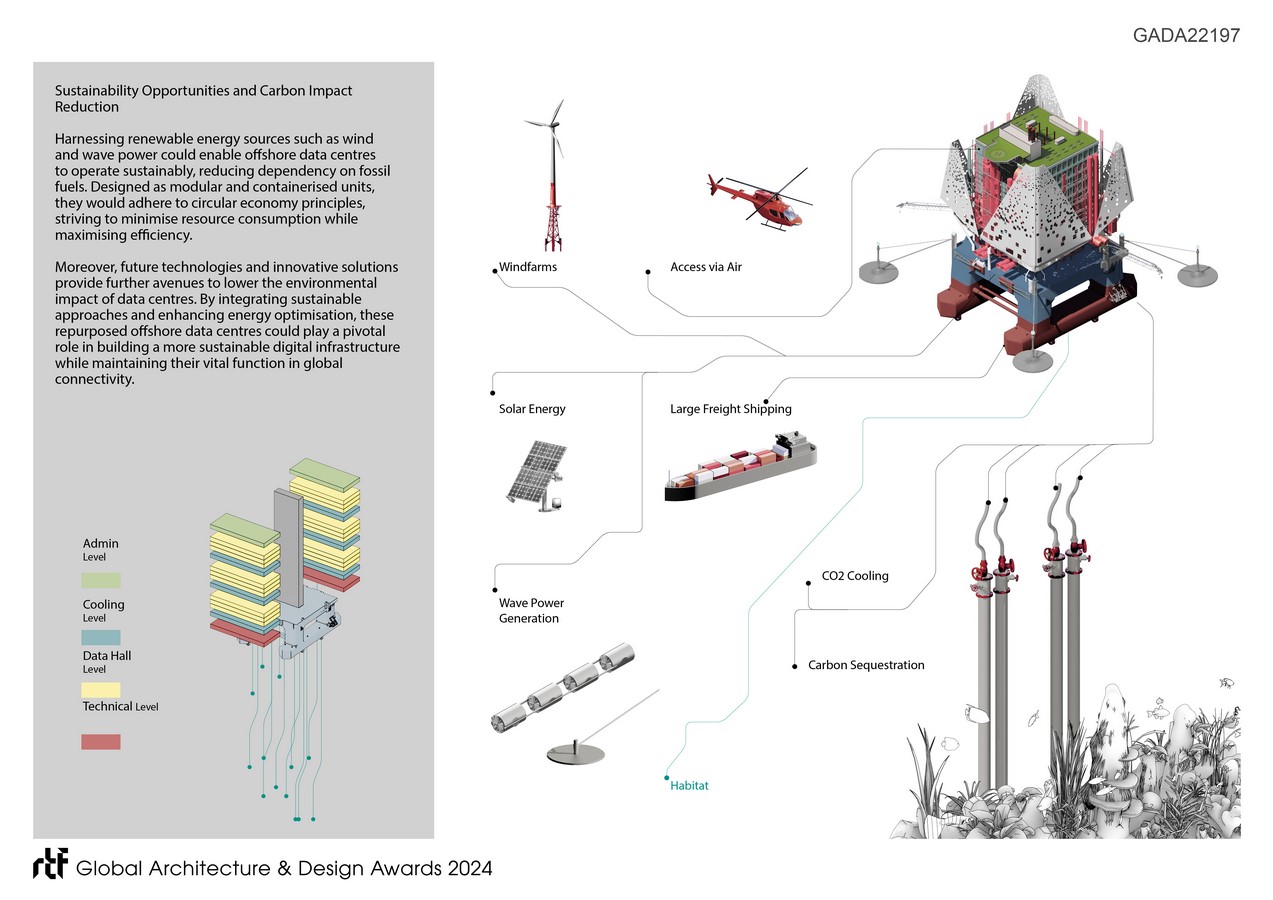
Data centres consume about 10% of global power and account for nearly 2% of greenhouse gas (GHG) emissions. Future data centre designs should integrate innovative technologies to counter these losses and complement operational processes.
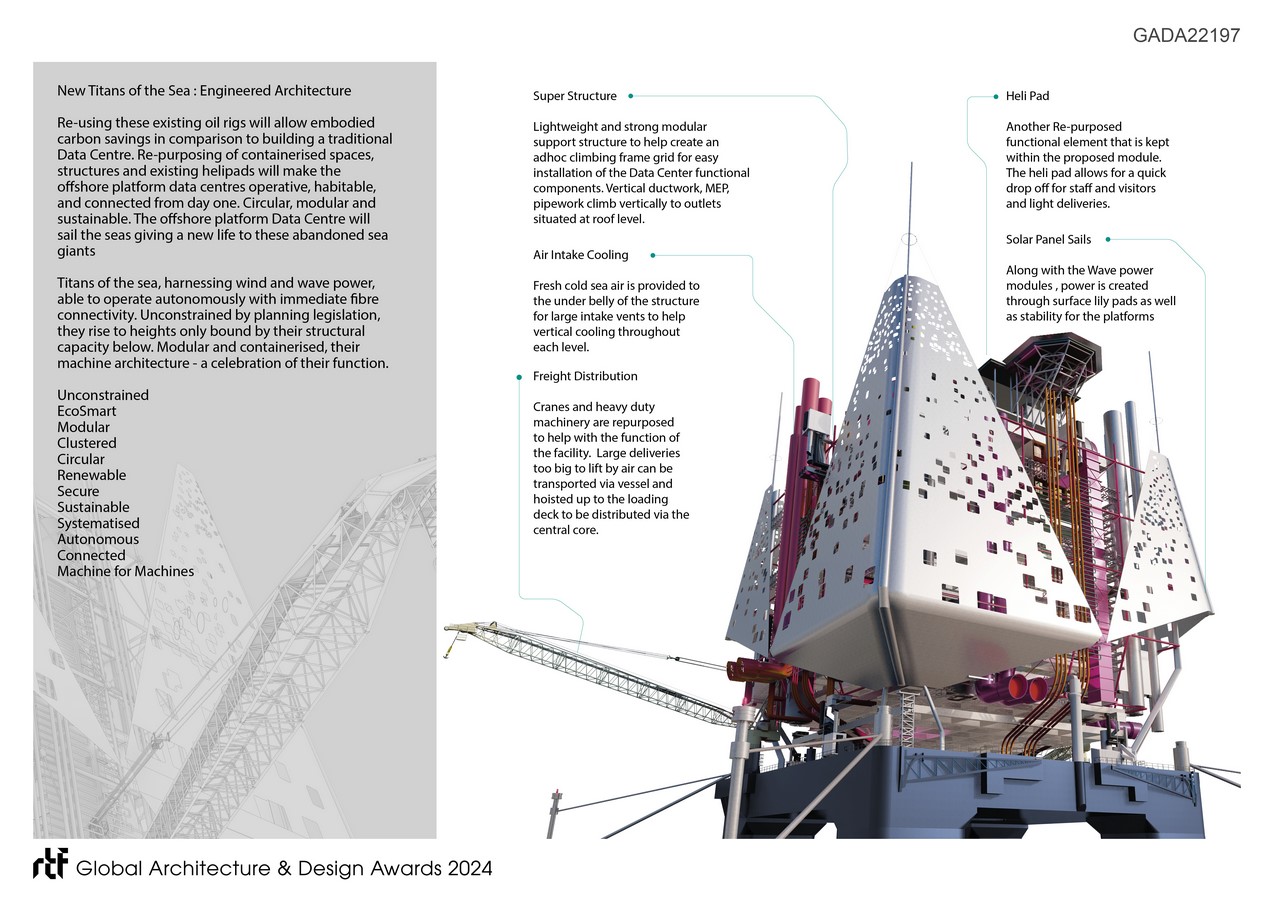
Research shows that underwater structures, including oil and gas rigs, support valuable ecosystems like North Sea coral reefs. Allowing marine life to continue to colonise these structures can reduce negative impacts on marine species and enhance their resilience to climate change.

In summary, repurposing decommissioned oil rigs into data centres using sustainable, circular, and innovative approaches creates a highly efficient, engineered architecture for the future.

